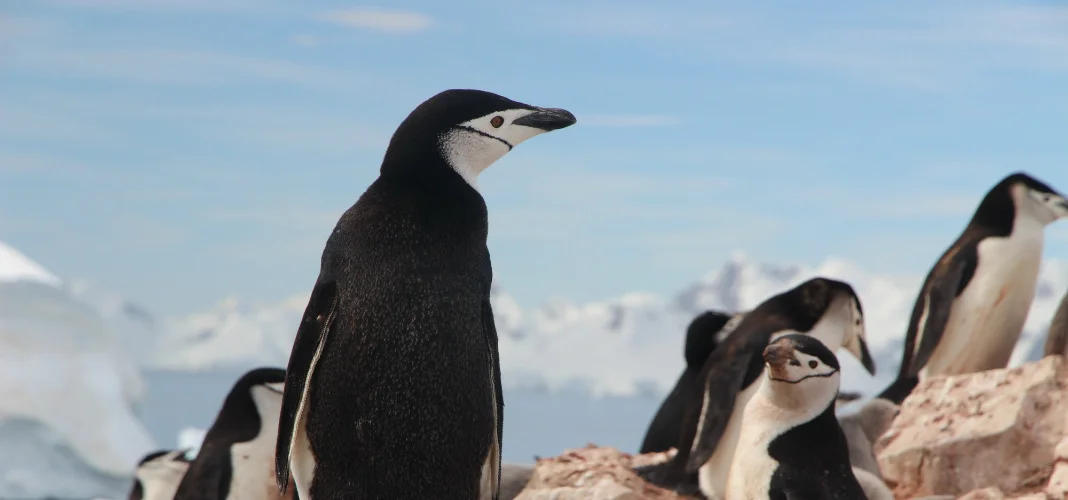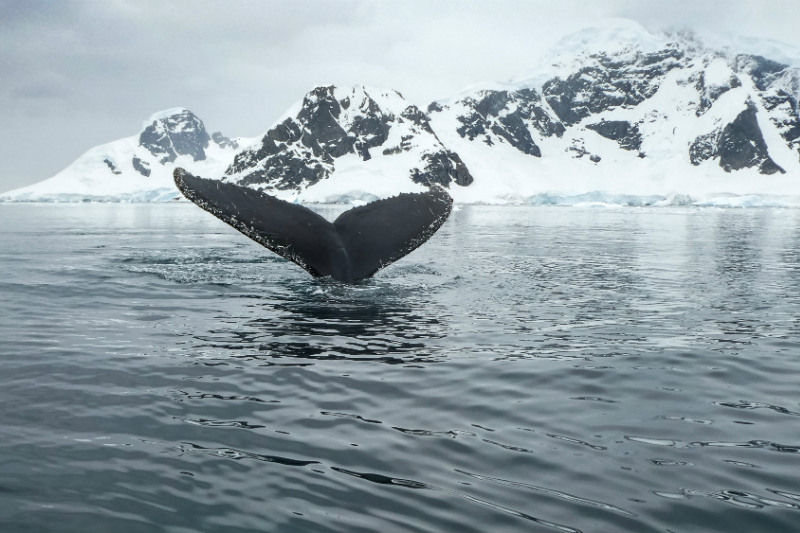It takes a hardy animal to survive the extreme conditions of Earth’s southernmost continent. Antarctica’s interior isn’t exactly a welcoming place, and between its blistering cold and extreme conditions, it boasts barely any biodiversity. But if you venture to the right locations, the real spots to discover the wildlife in Antarctica, you’ll encounter penguins, seals, whales, marine birds, and a slew of zooplankton and microscopic prey.
The key to finding these animals? Don’t stray too far from the water. Just keep to the Antarctic Peninsula and its surrounding islands, where the temperatures are fairly mild and the wildlife is abundant.
Here’s everything you should know about Antarctic animals before you board an expedition ship.
WILDLIFE IN ANTARCTICA: PENGUINS
These tuxedoed birds are one of the most popular animals on the planet, but if you’d like to encounter them in the wild, you’ll have to head south. Only one penguin species (the Galapagos penguin) lives near the equator — the others prefer chilly waters to subtropical climates.
Penguin colonies are often home to thousands of birds, but the various species tend to live in different areas of Antarctica. For example, chinstrap, gentoo, and Adélie penguins are big fans of places like the South Shetland Islands. On the other hand, emperor penguins generally prefer the pack ice of the Antarctic continent.
Let’s zoom in on Danco Island, a tiny, mountain-topped scrap of land on the Antarctic Peninsula, where you can come up close and personal with several hundred gentoo penguins. Here, at a popular expedition stop, the birds build their nests, lay their eggs, raise their young, waddle to the beach, dive for krill, and do their best to survive.
If you get to meet these birds, or the inhabitants of any other penguin colony, you won’t be able to help falling in love with them. But you’ll also notice something that’s not quite so endearing: penguins poop — a lot.
The ice and snow and beaches of Antarctica are often covered in penguin poop, sometimes called guano. It’s slimy and smelly, and it can be a little off-putting, but it does serve an important ecological purpose. As the penguins hunt for nutrient-rich foods in the ocean, they bring nitrogen back to land, fertilizing soil that would otherwise be barren. This process creates “invertebrate hotspots” and sustains a wider range of biodiversity than many biologists once believed possible.
Scientists have also realized that they can spot guano in satellite images of Antarctica — and this recent discovery has already helped them track Adélie penguin colonies. These penguins’ krill-heavy diet turns their guano pink, so if the scientists can spot pink patches on the bleak landscape, they can estimate colony size and draw conclusions about diet.
All in all, if Antarctica’s penguins don’t win you over, we don’t know what will.
WILDLIFE IN ANTARCTICA: SEALS
Antarctica is home to six seal species (crabeater, elephant, fur, leopard, Ross, and Weddell), each one distributed differently across the region. Ross seals usually stick to continental pack ice, but most other species prefer more northerly locales, such as the Falkland Islands and South Georgia. Interestingly, several species converge in a few concentrated areas, like the South Shetland Islands, where you can spot fur, elephant, leopard, and Weddell seals.
You really have to see seals in action to understand how remarkable they are. With their thick layers of blubber, they don’t exactly look like champion swimmers, but appearances can be deceiving.
Elephant seals, for example, have evolved over millions of years to become astonishingly agile in the water. They can dive nearly a mile deep and stay underwater for up to two hours, largely because their bodies contain massive oxygen stores and boast a high blood volume. Even the seals’ hearts slow down as they dive, allowing them to make the most of every underwater heartbeat.
Since Antarctic seals don’t really have any terrestrial predators, they’re usually unafraid of humans. In the water, these animals occasionally fall prey to killer whales or large sharks — but even so, seals are close to the top of the food chain. Their diet varies from species to species, but they usually feed on krill, squid, fish, and/or penguins.
Let’s hear a loud arf, arf for the seals of Antarctica!
WILDLIFE IN ANTARCTICA: WHALES
There’s nothing quite like seeing a sudden spout of water as it blasts into the chilly air. It might only last a few moments, but that split-second instance becomes a lifelong memory. And, luckily for the people bound for Antarctica, whale-watching is even more thrilling when it takes place in the world’s most remote corners.
While several species migrate to Antarctica for at least part of the year, travelers are most likely to spot humpback, minke, or killer whales during their expeditions.
Humpbacks and minkes are both extremely acrobatic. These whales are excellent at breaching, or rocketing their bodies into the air and twirling as they go, as well as spyhopping, or lifting about a third of their body out of the water to take a look around. Of course, humpbacks and minkes are also highly curious — and coupled with their penchant for acrobatics, they love swimming up to boats, checking out their surroundings, and showing off for passengers.
As if that wasn’t impressive enough, humpbacks also love to sing, producing a series of squeaks, roars, whistles, and calls. Scientists have a variety of theories to explain whale song — that the song functions as a way to attract mates, as a communication method, or as an aid in coordinating attacks on prey — but no matter what the correct theory is, you’re quite likely to hear this incredible phenomenon during your expedition. Humans can hear whale song from up to 20 miles away from the singing humpback, so listen carefully!
Killer whales, or orcas, are technically the largest member of the dolphin family, but we won’t get too caught up on that now. Although orcas do live in every ocean on earth, they’re most abundant in Antarctica. These animals are formidable hunters, often choosing to work together and catch their prey as a pod, but scientists have noticed that different groups of orcas prefer distinctive diets. Some orcas like to munch on whales, while others generally eat seals and penguins, and still others just go after fish.
Of course, Antarctica’s waters are a hotspot for plenty of additional whales, but the other species tend to be more elusive and difficult to spot. Go ahead and keep an eye out for them, but don’t be surprised if they evade your notice.
And there you have it — our official introduction to the wildlife in Antarctica.
Join Acanela on an expedition, and you just might see these beautiful creatures for yourself! And if you’d like to learn more about Antarctic animals before you go, make sure to watch our video on why penguins can’t fly.
Article written by Whitney Brown



